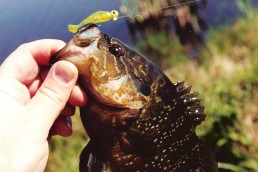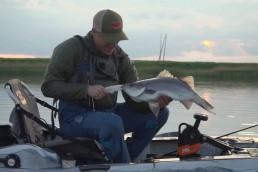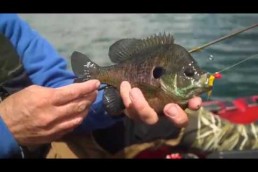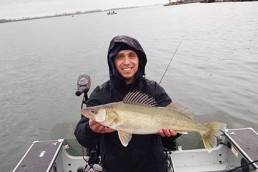Fishing Ponds in Summer
SHARE THIS POST
One nice thing about being an angler in Illinois is the abundance of ponds. Some are on public land while others are secluded on a private acreage. Often, and with a little diplomacy, one can gain access to fish the latter.
Some anglers favor the larger lakes and impoundments, but most areas of the state are dotted with ponds ranging from less than an acre up to several hundred. There are usually more fish per acre in a small pond than in a large lake. And ponds that receive light fishing pressure can be quite productive if you use a little different approach.
Anyone fishing a pond may run across bluegills, sunfish, catfish or bass. Some owners of these waters will also stock crappies. If managed well, a pond full of fish does very nicely. Good management includes fertilization and control of the harvest. Fertilization adds to the nutrient base and controls undesirable vegetation in much the same way a farmer tends his fields.
Fish kills can be a problem in small ponds. If a few fish or just one species is dying, then it’s probably a disease that is killing them. If fish of several different species die overnight, it’s likely a chemical problem. These issues can be the result of low oxygen or insecticide or herbicide contamination.
Assuming that a pond is healthy, there are still other considerations to be undertaken. Fishing one can be challenging and the angler still needs to apply all his knowledge of seasonal patterns, activity and location. Bass in small waters follow the same daily patterns as fish anywhere. Channel catfish tend to want to school up and move around the pond at regular intervals, so you will have to move with them. You will also need to use smaller baits and wear clothing that will protect them from insects and plants around the shoreline.
Anglers need to be quiet when walking and casting around a pond and then cast parallel to the bank, rather than just casting straight out. If one is using a float rig then the smaller the better. Relatively shallow water demands that you not make a big splash when casting, and the small float will not present a large overhead image to the fish.
Are you enjoying this post?
You can be among the first to get the latest info on where to go, what to use and how to use it!
On cooler days, bass feed below the surface and are usually susceptible to underwater lures and baits presented slowly. Later, as the water warms, they’ll strike surface lures early in the morning or late in the evening near the shoreline. During the daylight hours they will be near stumps, fallen trees and points jutting out from shore. If live bait is preferred, then minnows, crayfish, frogs and nightcrawlers are the ticket. And use a hook ranging from l/0 to 6/0.
Bluegills and sunfish can be caught as they move to the spawning beds or along weed beds near submerged brush. The simple cane-pole small float and number 8 to 12 hooks baited with earthworms, crickets, catalpa worms, leeches or maggots, can be used. Jig the bait up and down off the bottom, but sometimes it’s best to leave it motionless on the bottom.
Catfish shun the light and feed near the bottom or at night on flats. Most of the feeding is at night, though. The pole and line method described above may require a number 2 or 4 hook. Baits used are usually pieces of fish, crayfish, blood baits, chicken or turkey livers and cheese or stink baits.
Move away from classic fish locations if they do not pan out right away; these probably have received too much fishing pressure from others. Keep your options open, but the best plan of attack is to begin with the obvious spots. Again, if they do not pan out, expand the search. And fool those little rascals by going after them in areas that others have not yet tried.
Ponds are fragile fisheries and are susceptible to overharvesting. There are no hard and fast rules for the amount of fish to take from a pond. But if the angler is serious about protecting these smaller fisheries, he can simply throw back the bigger fish and take home a few of the smaller ones for the table. Remember, ponds that experience a light harvest over a period of time tend to have larger bass or panfish, but an overharvest can quickly change the distribution of fish in a particular pond.
MWO
SHARE THIS POST
Did you enjoy this post?
You can be among the first to get the latest info on where to go, what to use and how to use it!
Don Gasaway
Don Gasaway is a veteran freelance outdoor writer from Marion, Ill. He may also be found at: https://www.facebook.com/DonGasawayWriter and facebook.com/Wandering Angler. Comments are welcome



